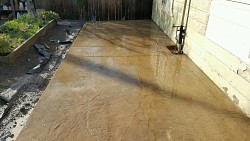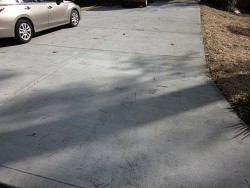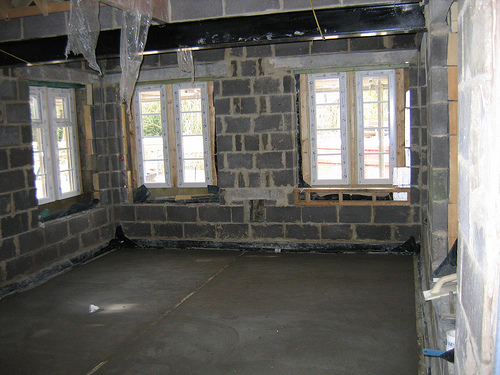How to Repair a Cracked Concrete Floor
Many people think that concrete is a material that is best used outdoors for patios, walkways, and sidewalks, but this durable building material is increasingly being used for indoor flooring as well -- but not just for garages and basements! Concrete’s overall strength, resistance to wear, and relative ease of installation is making it a popular choice for business owners and even homeowners who want to anchor some or all rooms with the sturdiness (not to mention industrial-chic) that this classic material provides, without having to worry too much about upkeep. When properly installed, concrete flooring can last for decades, but this does not mean that it is free of problems; small or large cracks from wear and tear can be an issue for concrete whether it’s inside or outside.
Assuming that the concrete has been mixed and installed properly, cracks will not result from overall structural weakness; cracks in a concrete floor can result from thermal (temperature) expansion or water damage that has weakened a certain spot in the concrete over time. For safety reasons -- and because injury can result from one’s foot getting caught in a crack regardless of the size -- it is important to fix a crack or multiple cracks in concrete flooring as soon as you spot them. Here are the steps you will need to take in order to fix a crack or multiple cracks:
After you make sure that your work area and the area surrounding it are clear of furniture and appliances so that nothing spills or gets dirty while you work, clean the floor area surrounding the crack to the best of your ability with a stiff broom and dustpan. This will ensure that no debris or dirt gets into the work area and the crack.
Use a ruler or other instrument to measure the width and length of the area that needs to be repaired. This step will help you get an idea of how much needs to be repaired and filled. You can also use a leveling tool if you are not sure if the crack is completely even.
Using a cold chisel and a hammer, chip away at the inside of the crack so that the area revealed is slightly bigger than the crack itself -- this way, you will have more concrete exposed in the crack so that the new concrete can successfully bond. After the initial chipping, clean any dust and debris away with a stiff wire brush or handheld broom to keep the work area clean. You can also vacuum the crack area if it does not look clean enough.
Brush a concrete bonding agent (available at most hardware stores) along both sides of the crack. It should look like you have painted or traced alongside the crack lines once you are finished with this step. You can also mix a bonding agent in with certain types of wet cement -- thereby combining this step and the following step -- but it really depends on the type of concrete used for your floor overall, as you will be repairing cracks with a compound that matches that of the floor. You can also buy concrete filler from any hardware store, and use that in place of mixing your own batch of concrete for crack repair.
While the bonding agent is still sticky, fill the entire crack with concrete mix or compound using an appropriately-sized trowel. When the crack is filled and is level with the floor, use the trowel to scrape any excess concrete away so that the new filling is completely flush with the floor, and with the old concrete. Once it is properly flush, leave your work area to dry for about 30 minutes -- refer to the finish options below if you want to avoid the traditional “rough” concrete texture. Otherwise, you do not have to worry about curing the new concrete by keeping it moist. The new concrete will be fully-cured in about 24 hours.
If you want a nice finished texture, you can go over the newly-covered crack with a steel finishing trowel. If not, you can leave it as-is; be sure to leave the area to properly cure for at least 24 hours. For extra longevity and protection, apply a polyurethane-based sealant (available at almost any hardware store) -- with a roller brush or a stiff broom -- over the new concrete after the initial 24-hour curing period has passed.
Anna Hill writes for Networx.com.
Looking for a Pro? Call us (866) 441-6648

Concrete Average Costs
Concrete Contractors Experiences

Concrete Patio Is The Finishing Touch For An Artist's Studio

Outstanding Job On A New Concrete Driveway




